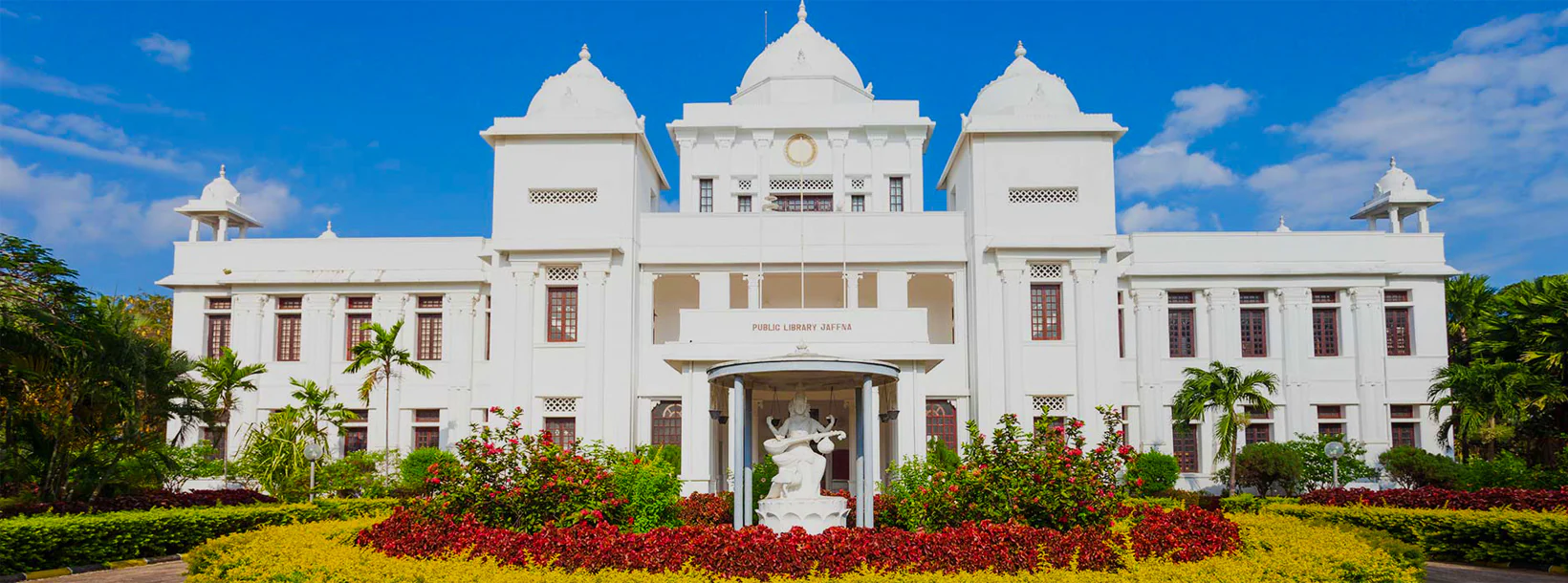
Jaffna City
Jaffna is the main city of Jaffna peninsula in the northernmost district of Sri Lanka. Comfortable intercity busses from Colombo take 10-12 hours to reach the city of Jaffna.
ジャフナ フォート
現代スリランカのジャフナは、スリランカのヒンドゥー・タミル文化の縮図であると推測できます。しかし、入手可能な考古学的証拠から、古代には仏教文化がスリランカの他の場所だけでなく北部にも広がっていたことが確認できました。 13世紀にポロンナルワ王国が滅亡。西暦、ナガディパとしても知られるジャフナ半島に独立した政治政権が誕生し、その存続はインドとスリランカの間の貿易ルートの支配の中心地として確立されました。このようにして、ジャフナは独立国家を築き上げ、現在では古代と同様にスリランカの統治に対して強い政治的影響力を及ぼすことができた。ジャフナの歴史性とその残された証拠は、オランダ砦とそれに関連するその他の考古学的記念碑の存在によって例示されていますが、それらは今日まで遺跡として見られています。
ジャフナ要塞とポルトガル人、オランダ人、イギリス人による島の占領中に建設された建物は、その建設時期に関連した建築上の特徴を示しています。これらの建物は、国を荒廃させた30年にわたる内戦で破壊されました。
スリランカに建てられたオランダの砦としては 2 番目に大きいジャフナ砦は、最近 30 年にわたる武力紛争の結果、直接の猛攻撃を受けた考古学的記念碑です。 LTTE の継続的な攻撃により海辺の城壁の一部が破壊されたが、全体として占領された砦は深刻な破壊を受けていない。城壁の外側には外堀が存在します。堀の外側には外側の城壁があり、その中には 5 つのトンネルがそれぞれ対になって組み込まれています。トンネルの保存状態は良好ですが、現在は扉がありません。しかし、過去には出入り口があった形跡が見られます。
砦内の記念碑は、この地域で激化した紛争中に破壊されました。これらのうち、女王の宮殿と名付けられた記念碑は、識別できる限り、他のものよりも十分なレベルの保存状態にあります。その上部構造は完全に破壊され、残った壁は根を張った侵入植物の存在により破壊されつつあります。
この建物の前にあるオランダ建築様式に基づいて建設された短い欄干の壁は、ほぼ破壊を免れています。建物の裏手には、装飾的なトレリスの欄干のある城壁へのアクセスがあります。この通路はオランダ人が武器を城壁に運ぶために使用した可能性があります。オランダ建築様式の 2 つの池のあるベランダが女王宮殿の前に存在していたことを示す証拠があります。
要塞内にあったオランダ教会は爆撃を受け、完全に破壊された。この構造は文書化されているため、古代のレイアウトを特定することができました。その広い壁は石灰岩で作られていました。
旧刑務所、病院、付属建物などの他の建物も多くの破壊を受けました。内側の城壁にある鐘楼は、オランダの他の要塞にあるものと似ています。現在、彼らの壁は失われています。
海辺の城壁の境界近くには、オランダ統治時代に建設されたと考えられる井戸と、後年に建てられたヒンズー教の寺院があります。
About Jaffna District
Jaffna is the capital city of the Northern Province, Sri Lanka. 85% of the populations of the Jaffna and Kilinochchi districts are Hindus. The Hindus follow the Saivite tradition. The remainders are largely Roman Catholics or Protestants, some of whom are descendants of colonial settlers, known as Burghers. The Tamils are divided along caste lines, with the farmer-caste Vellalar forming the majority. Sea products, red onion, and tobacco are the main products in Jaffna.
Jaffna is home to beautiful Hindu temples. An Old Dutch Fort still stands well preserved within which is an old Church. Another example of Dutch architecture is the King's House. No visit to Jaffna is complete without tasting the exquisite Jaffna mango, reputed for its sweetness. About 3 km away is the majestic Nallur Kandaswamy Temple, home to the largest religious festival in Jaffna. The Kayts Harbour is an ancient ship docking site in the Jaffna region.
About Northern Province
The Northern Province is one of the 9 provinces of Sri Lanka. The provinces have existed since the 19th century but they didn't have any legal status until 1987 when the 13th Amendment to the 1978 Constitution of Sri Lanka established provincial councils. Between 1988 and 2006 the province was temporarily merged with the Eastern Province to form the North-East Province. The capital of the province is Jaffna.
Northern Province is located in the north of Sri Lanka and is just 22 miles (35 km) from India. The province is surrounded by the Gulf of Mannar and Palk Bay to the west, Palk Strait to the north, the Bay of Bengal to the east and the Eastern, North Central and North Western provinces to the south.The province has a number of lagoons, the largest being Jaffna Lagoon, Nanthi Kadal, Chundikkulam Lagoon, Vadamarachchi Lagoon, Uppu Aru Lagoon, Kokkilai lagoon, Nai Aru Lagoon and Chalai Lagoon.Most of the islands around Sri Lanka are to be found to the west of the Northern Province. The largest islands are: Kayts, Neduntivu, Karaitivu, Pungudutivu and Mandativu.
The Northern Province's population was 1,311,776 in 2007. The majority of the populations are Sri Lankan Tamils, with a minority Sri Lankan Moor and Sinhalese population. Sri Lankan Tamil is the major language spoken in the province by the vast majority of the population. The other language spoken is Sinhala by 1 percent of the population. English is widely spoken and understood in the cities.














